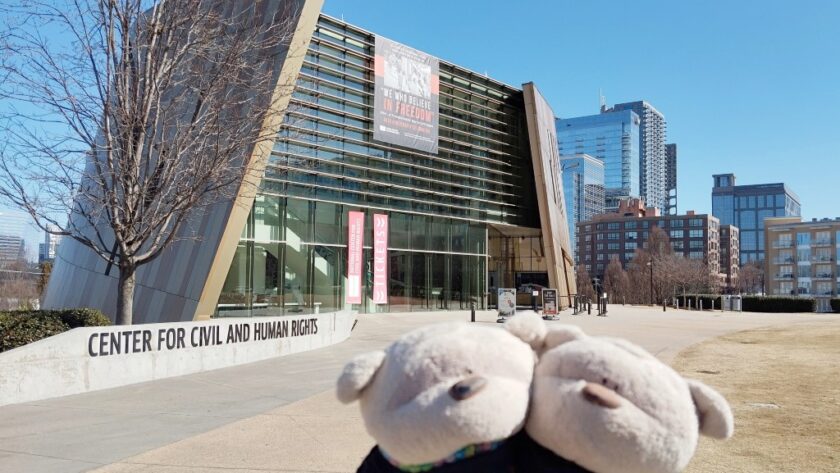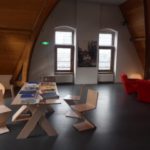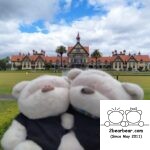National Center for Civil and Human Rights was our last stop for the day at Atlanta Georgia after our visits to Georgia Aquarium and World of Coca-Cola at Pemberton Place.
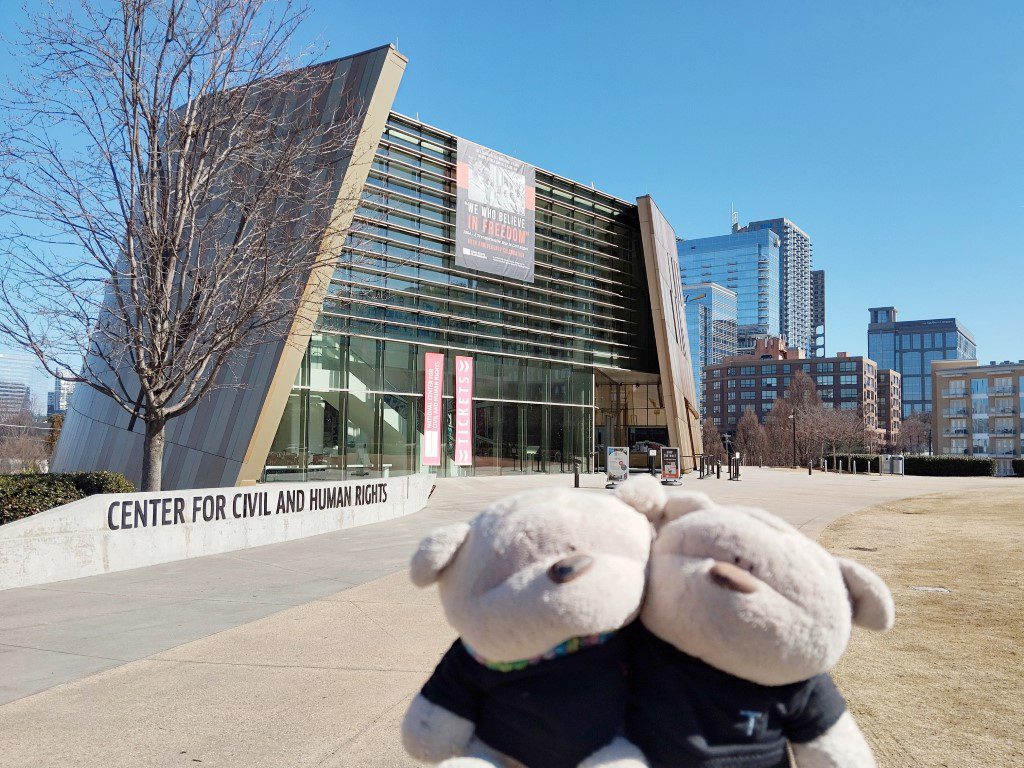
About the National Center for Civil and Human Rights Atlanta Georgia
The National Center for Civil and Human Rights is a museum in Atlanta Georgia that features exhibitions such as artifacts of Dr. Martin Luther King Jr, the civil rights movements in USA as well as stories of human rights struggles from around the world.
As we entered into the exhibition, we started to learn about the civil rights movements in USA…
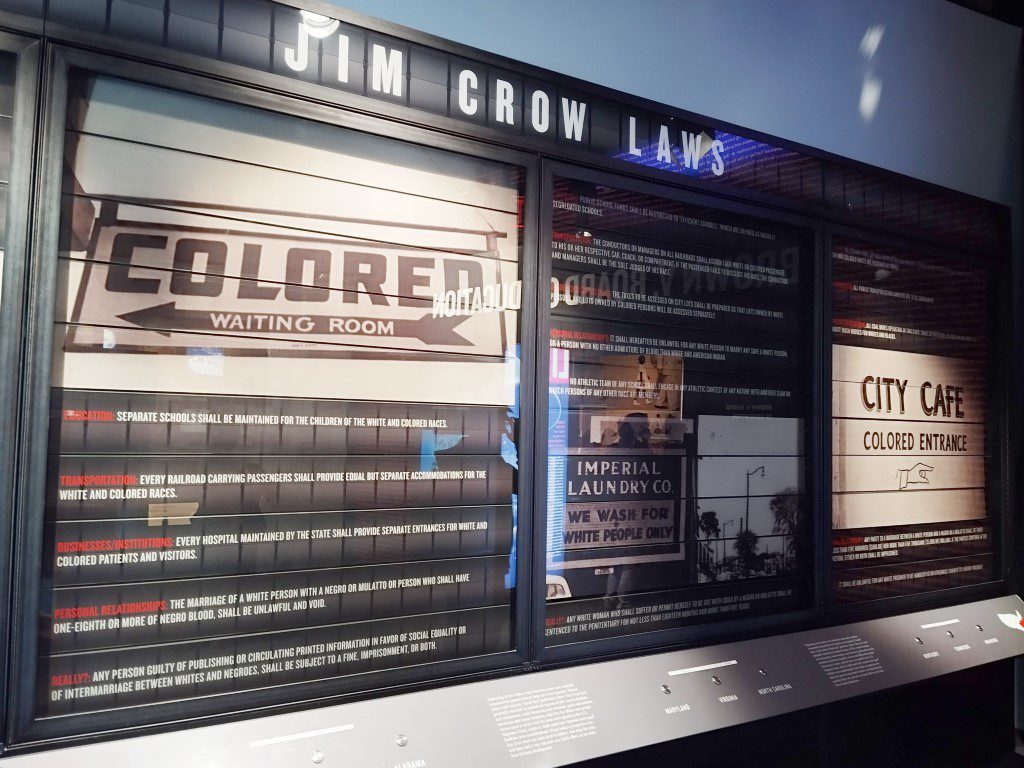
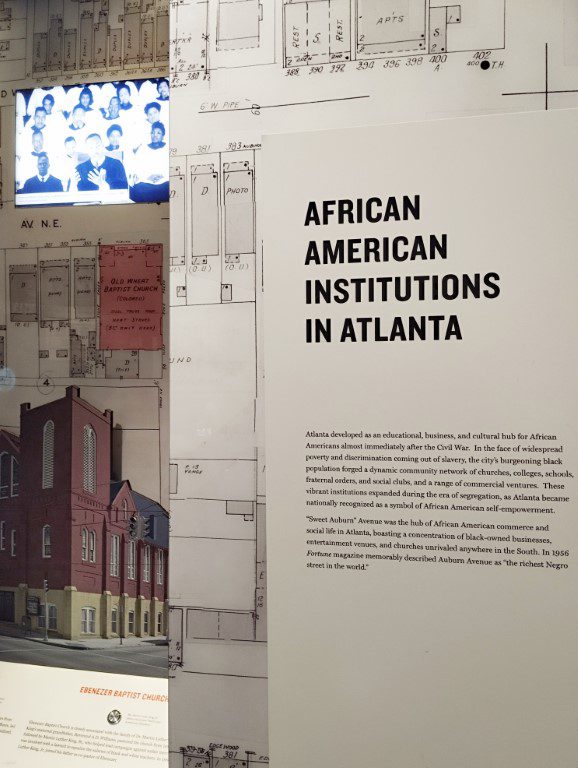
The tour started with a background of how Atlanta developed into an educational, business and cultural hub for African Americans after the civil war…
“In the face of widespread poverty and discrimination coming out of slavery, the city’s burgeoning black population forged a dynamic community network of churches, colleges, schools, fraternal orders, and social clubs, and a range of commercial ventures. These vibrant institutions expanded during the era of segregation, as Atlanta became nationally recognised as a symbol of African American self-empowerment.”
While we knew about the civil rights movement in USA, there were a couple of new things we learnt this time, starting with the Sit-In Movement…
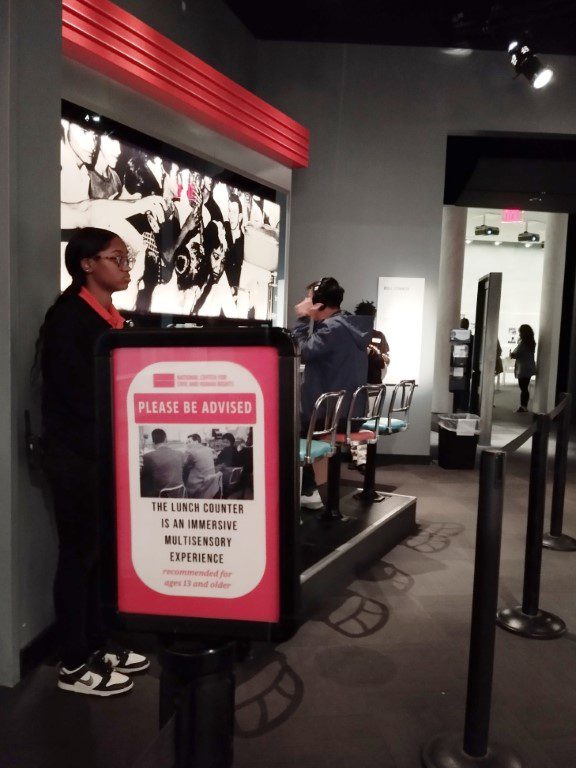
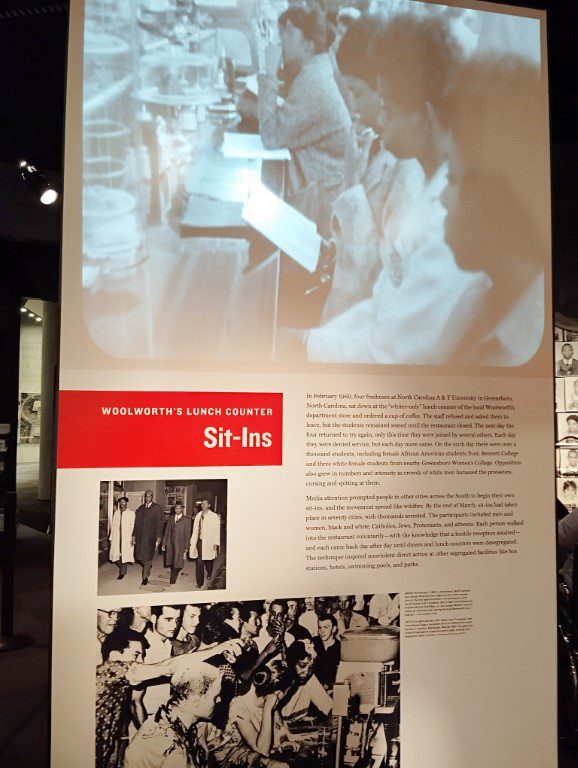
“In February 1960, four freshmen at North Carolina A&T University in Greensboro, North Carolina, sat down at the “whites-only” lunch counter of the local Woolworth’s department store and ordered a cup of coffee. The staff refused and asked them to leave, but the students remained seated until the restaurant closed. The next day the four returned to try again, only this time they were joined by several others. Each day they were denied service but each day more came. On the sixth day there were over a thousand students, including female African American students from Bonnet College and three white female students from nearby Greensboro Women’s College. Opposition also grew in numbers and intensity as crowds of white men harassed the protesters, cursing and spitting at them.
Media attention prompted people in other cities across the South to begin their own sit-ins, and the movement spread like wildfire. By the end of March, sit-ins had taken place in seventy cities, with thousands arrested. The participants included men and women, black and white, Catholics, Jews, Protestants, and atheists. Each person walked into the restaurant voluntarily – with the knowledge that a hostile reception awaited – and each came back day after day until diners and lunch counters were desegregated. The technique inspired nonviolent direct action at other segregated facilities like bus stations, hotels, swimming pools and parks.”
At National Center for Civil and Human Rights, you’ll be able to experience the Sit-In Movement at one of these seats shown above. All you have to do is wear a headphone and place both your hands on the table to begin. You’ll hear threats that escalate to curses and banging on the table and chairs – you could feel the vibration of those bangs as well as the threats that come right next to your ears. One can only imagine the real threats that faced the sit-in participants at the restaurants each day.
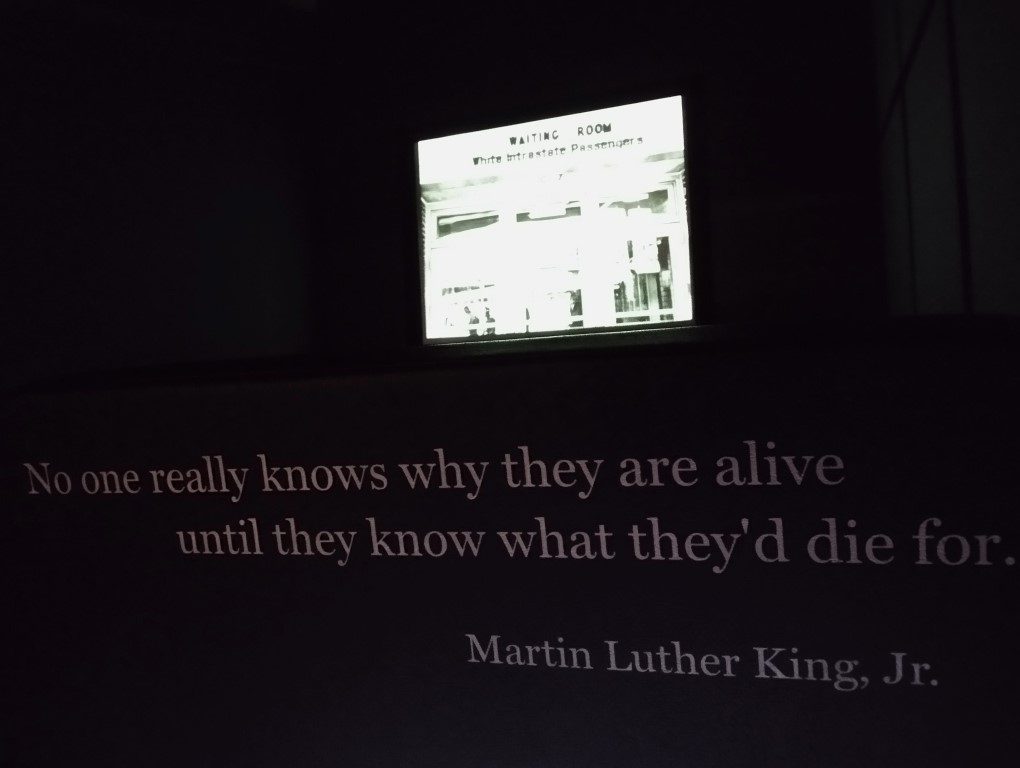
Next, we also learnt about the Freedom Riders. In 1946, the US Supreme Court banned segregation in interstate bus travel. In 1960, these bans were extended to include bus terminals, restrooms, and other facilities associated with interstate travel. Hence, these group of Freedom Riders set out in 4th May, 1961 to ride through the American South as a protest for such segregations that were still around in some states. The ride started from Washington DC to New Orleans and along the way, the white riders would use areas designated for blacks and vice versa. Violence then ensued, including the beating up of riders, slashing of tyres and firebombing of a bus. Nonetheless, these non-violent protests eventually evoked the Kennedy administration to take stricter enforcement of the laws at the federal level.
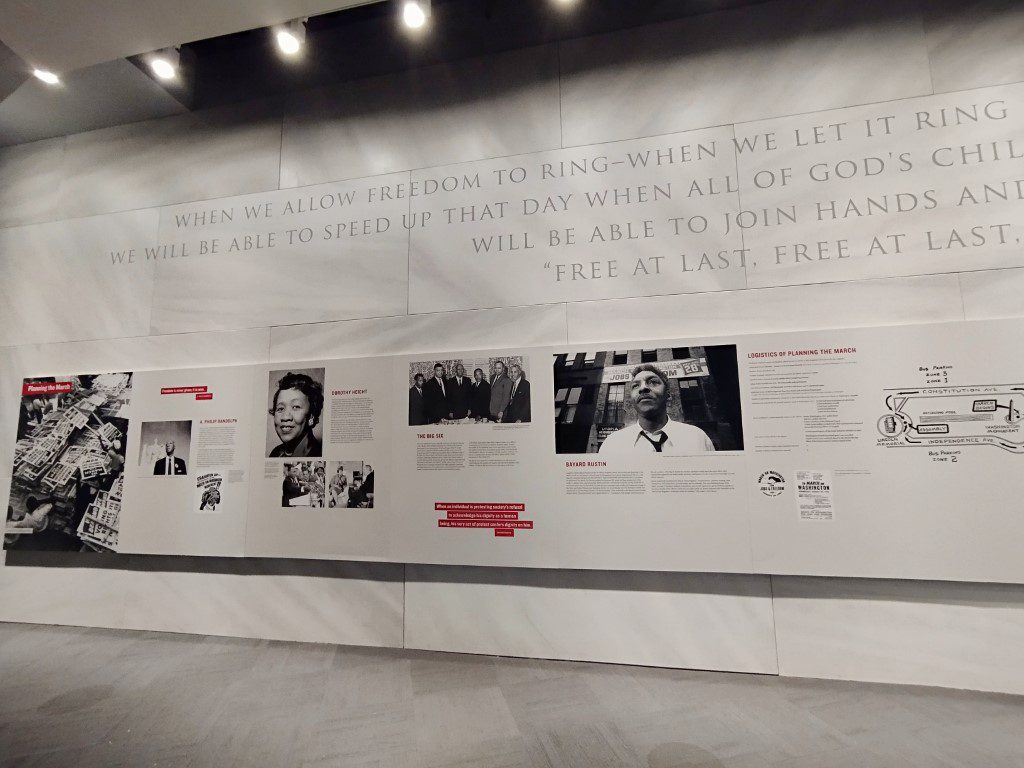
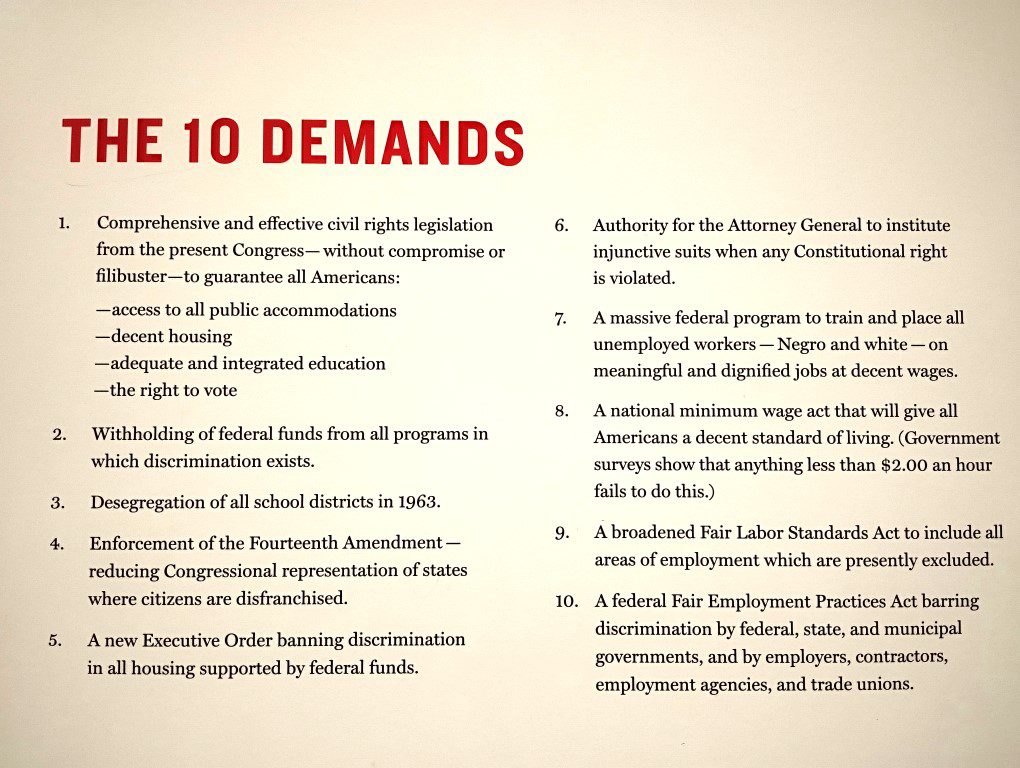
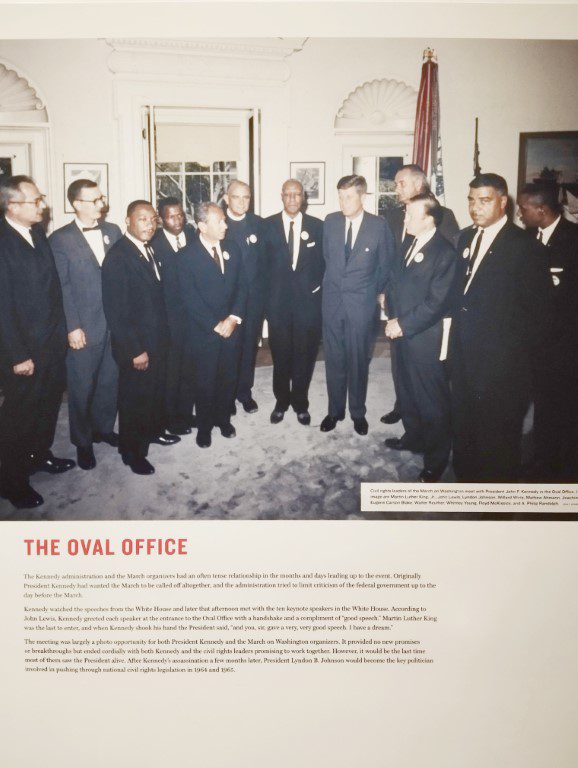
The March at Washington in August 28, 1963 involved around 250,000 people in support for civil rights for Black Americans. It was also during this day when Martin Luther King Jr made his famous “I have a dream speech”.
“The Kennedy administration and the March organisers had an often tense relationship in the months and days leading up to the event. Originally President Kennedy had wanted the March to be called off altogether, and the administration tried to limit criticism of the federal government up to the day before the March.
Kennedy watched the speeches from the White House and later that afternoon met with the ten keynote speakers in the White House. According to John Lewis, Kennedy greeted each speaker at the entrance to the Oval Office with a handshake and a compliment of “good speech”. Martin Luther King was the last to enter, and when Kennedy shook his hand the President said, änd you, sir, gave a very very good speech. I have a dream.”
The meeting was largely a photo opportunity for both President Kennedy and the March on Washington organisers. It provided no new promises or breakthroughs but ended cordially with both Kennedy and the civil rights leaders promising to work together. However, it would be the last time most of them saw the President alive. After Kennedy’s assassination a few months later, President Lyndon B. Johnson would become the key politician involved in pushing through national civil rights legislation in 1964 and 1965.”
The March on Washington also reminded us of our visit to National Civil Rights Museum in Memphis Tennessee where Martin Luther King Jr was assassinated at the Lorraine Motel in Memphis in 1968.
About Human Rights
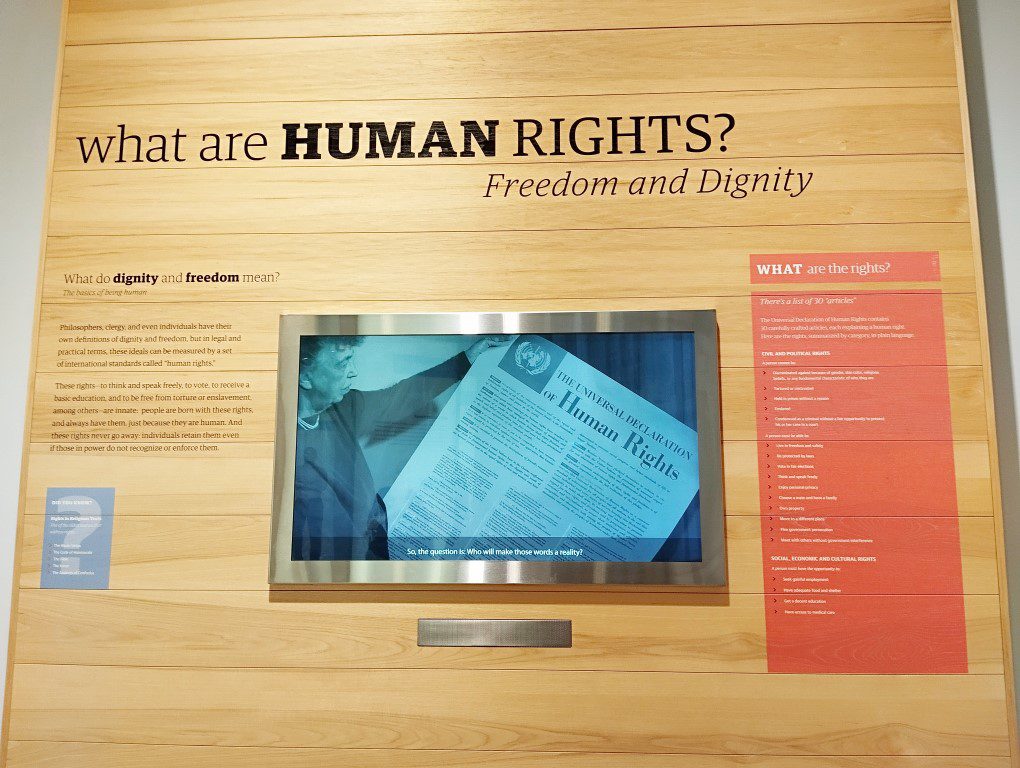
The other part of the museum covered Human Rights issues started with the Universal Declaration of Human Rights. The Human Rights are summarised by category here
Civil and Political Rights
A person cannot be:
– Discriminated against because of gender, skin colour, religious beliefs, or any fundamental characteristic of who they are
– Tortured or mistreated
– Held in prison without a reason
– Enslaved
– Condemned as a criminal without a fair opportunity to present his or her case in a court
A person must be able to:
– Live in freedom and safety
– Be protected by laws
– Vote in fair elections
– Think and speak freely
– Enjoy personal privacy
– Choose a mate and have a family
– Own property
– Move to a different place
– Flee government persecution
– Meet with others without government interference
Social Economic and Cultural Rights
A person must have the opportunity to:
– Seek gainful employment
– Have adequate food and shelter
– Get a decent education
– Have access to medical care
After reading these Human Rights, we’re really thankful to have been born in Singapore that all of the above are given to all Singaporeans and more. We have racial and religious freedom in Singapore as well as a government that cares for the well-being of Singaporeans whether in bread and butter issues like employment and inflation or societal issues such as education, housing and retirement. May the generations of leaders in Singapore continue to have the wisdom and empathy to take care of the people in the years to come!
The exhibits thereafter showed the countries in the world where human rights are contravene and how modern-day slavery still takes place across the world such as in lowly paid jobs with improper working conditions. Another great area of exhibits to learn about contravenes to human rights even in our modern world of today.
Architecture at the National Center for Civil and Human Rights Atlanta Georgia
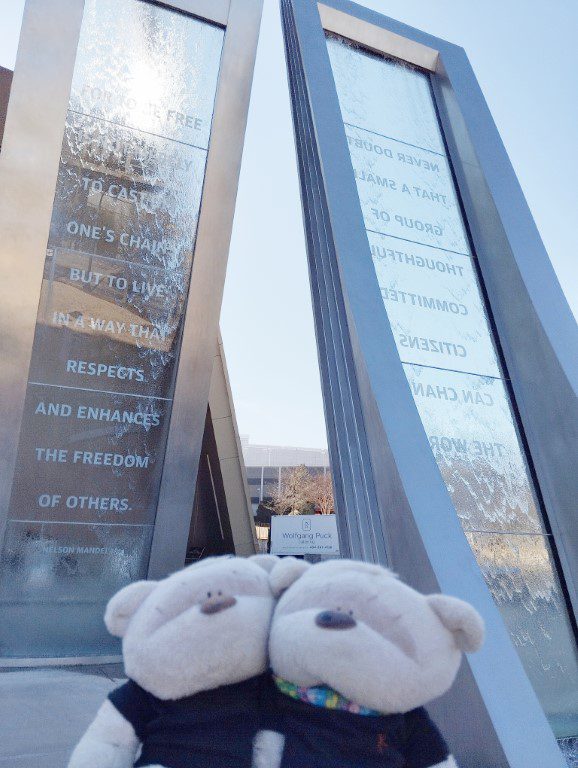
The architecture of the National Center for Civil and Human Rights in Atlanta Georgia also bore certain meaning as described here:
“Inspired by architecture and spaces associated with historic civil and human rights movements and events, The National Center for Civil and Human Rights creates a space for action. Conceived by award-winning architect Philip Freelon in partnership with HOK (now Perkins+Will), The Center’s unique structure is designed to enhance the experience of visitors and inspire them to learn about and take action for the civil and human rights movements worldwide.
His goal for the building was to create a physical representation of The Center’s vision. The curved walls of The Center represent two cupped hands, protecting something sacred: the dignity of all human beings. The exterior façade displays many tones, a mosaic of different nationalities that represents the idea that people from all walks of life can work together in harmony.
Phil Freelon was chosen following an international design competition. The winning design was then developed with the goal of creating a physical representation of The Center’s vision. The curved walls of The Center embrace the interior exhibits and supporting spaces in a manner that suggests the joining of hands. The colors of the façade creates the illusion of many tones, akin to skin and representing different nationalities. This powerful gesture also alludes to the idea that people from all walks of life can work together toward a common goal.”
If you enjoyed our content, “Like” us on Facebook Today!
All in all, we were educated at the National Center for Civil and Human Rights. Even though we have been to many museums learning about slavery and the civil rights movement (including Rosa Park’s Bus Boycott), we still learnt new things such as the Sit-In Movement as well as the Freedom Riders. The Human Rights segment about modern-day slavery also puts another slant on how slavery still continues to this day. A surreal museum to visit but a great venue for education about civil and human rights in our world today.
